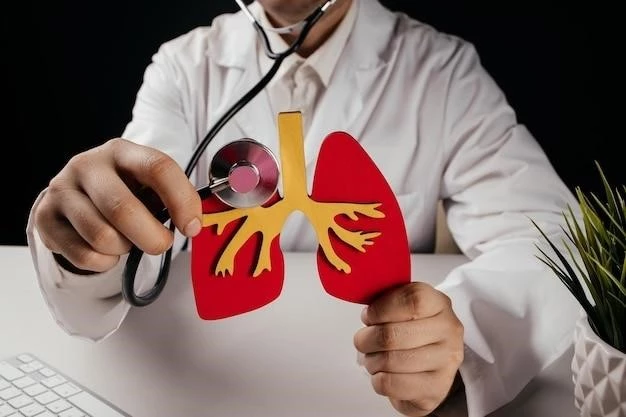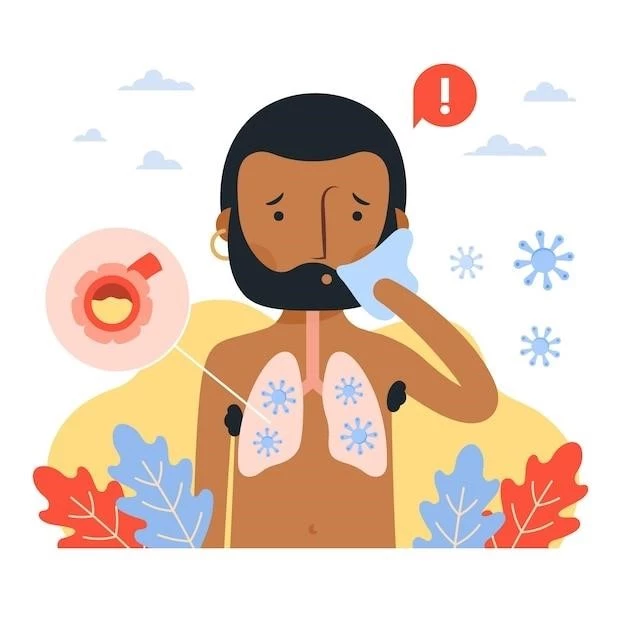Introduction
Laryngeal papillomatosis (LP)‚ also known as recurrent respiratory papillomatosis (RRP)‚ is a condition characterized by over-proliferation of benign squamous papillomas in the aerodigestive tract. RRP can manifest in both children and adults‚ causing recurrent benign lesions in the upper respiratory tract.
Overview of Recurrent Respiratory Papillomatosis (RRP)
Laryngeal papillomatosis (LP)‚ also known as recurrent respiratory papillomatosis (RRP)‚ is a rare benign neoplasm primarily affecting the respiratory tract. Caused by the human papillomavirus (HPV)‚ RRP results in the growth of wart-like tumors in the upper airway. This condition‚ while benign‚ can cause significant respiratory distress‚ especially in pediatric cases‚ and often requires surgical intervention for management.
Cause and Presentation
Recurrent Respiratory Papillomatosis (RRP) is caused by human papillomavirus (HPV)‚ leading to the growth of benign papillomas in the respiratory tract. In children‚ RRP commonly presents as recurrent airway obstruction with symptoms like weak cry‚ hoarseness‚ and wheezing. Early recognition is crucial for prompt intervention.
Association with Human Papillomavirus (HPV)
Recurrent Respiratory Papillomatosis (RRP) is caused by the human papillomavirus (HPV)‚ specifically low-risk types 6 and 11‚ leading to the development of benign wart-like growths in the respiratory tract. HPV vaccination plays a crucial role in prevention. RRP can affect individuals across different age groups‚ presenting with varying clinical manifestations and disease severity.
Symptoms and Diagnosis
Recognizing symptoms of Recurrent Respiratory Papillomatosis (RRP) is crucial as it often presents with hoarseness‚ chronic cough‚ stridor‚ and respiratory distress. Diagnosis involves a thorough examination of the upper respiratory tract and may include imaging studies or direct laryngoscopy. Early detection is key to prompt management.
Common Signs and Symptoms to Look Out For
Recognizing common signs and symptoms of Recurrent Respiratory Papillomatosis (RRP) is essential as it can present with hoarseness‚ chronic cough‚ stridor‚ wheezing‚ and in severe cases‚ respiratory distress. It is crucial to seek medical attention promptly if you or your child experience any of these symptoms to ensure timely diagnosis and appropriate management.
Age Groups Affected
Recurrent Respiratory Papillomatosis (RRP) affects individuals of varying age groups‚ with the pediatric population being the most commonly affected. Children often experience recurrent airway obstruction‚ while adults may present with a milder form of the disease. Understanding the age-specific manifestations is crucial for early detection and appropriate management.
Differences in Disease Manifestation in Children vs. Adults
Recurrent Respiratory Papillomatosis (RRP) can manifest differently in children and adults. The pediatric population commonly experiences symptoms like weak cry‚ hoarseness‚ and wheezing‚ while adults may have a milder manifestation of the disease. Understanding these age-specific differences is essential for proper diagnosis and tailored treatment approaches.

Treatment Approaches
Effective management of Recurrent Respiratory Papillomatosis (RRP) often involves a multidisciplinary approach. Surgical interventions like laser excision or microdebrider-assisted removal are commonly used to reduce papilloma burden and improve airway patency. Adjuvant therapies such as antiviral medications or adjuvant medical treatments may also be considered to prevent regrowth and alleviate symptoms. Regular monitoring and follow-up are essential components of long-term care for individuals with RRP.
Role of Surgery in Managing RRP
Surgery plays a fundamental role in the management of Recurrent Respiratory Papillomatosis (RRP) by removing papillomas that obstruct the airway. Procedures like laser excision or microdebrider-assisted removal are commonly employed to reduce the burden of papillomas and improve airway function. Surgery aims to enhance airway patency and alleviate symptoms associated with RRP. Adjuvant therapies may complement surgical intervention for optimal outcomes.
Preventive Measures
Preventing Recurrent Respiratory Papillomatosis (RRP) involves strategies such as HPV vaccination to reduce the risk of infection. Maintaining good respiratory hygiene‚ avoiding tobacco exposure‚ and minimizing high-risk sexual behaviors can also play a role in prevention. Early detection of symptoms and regular medical check-ups are vital in identifying and managing RRP effectively.
Importance of Vaccination for HPV Prevention
Vaccination against human papillomavirus (HPV) is crucial in preventing Recurrent Respiratory Papillomatosis (RRP) as the condition is primarily caused by HPV infection. HPV vaccines target high-risk strains like HPV 6 and HPV 11‚ reducing the likelihood of developing RRP. Ensuring vaccination compliance‚ especially in younger individuals‚ can significantly lower the risk of RRP and its associated complications.
Prognosis and Complications
The prognosis of Recurrent Respiratory Papillomatosis (RRP) varies depending on the extent of the disease and the age of the individual affected. Complications can arise from recurrent surgical interventions‚ including scarring of the airway and potential voice changes. Regular monitoring and adherence to treatment plans are essential in managing RRP effectively to prevent long-term complications.
Potential Long-term Effects of Untreated RRP
Left untreated‚ Recurrent Respiratory Papillomatosis (RRP) can lead to severe complications such as airway obstruction‚ voice changes‚ and respiratory distress. Without appropriate management‚ the continuous growth of papillomas in the respiratory tract can result in the need for frequent surgical interventions‚ increasing the risk of scarring and potential long-term issues with breathing and voice quality. Regular monitoring and timely intervention are crucial in preventing these long-term effects of untreated RRP.

Research and Developments
Advancements in the research of Recurrent Respiratory Papillomatosis (RRP) focus on innovative therapeutic approaches‚ including targeted antiviral treatments and immunotherapies to manage HPV infections. Ongoing studies aim to improve surgical techniques and develop prophylactic strategies through HPV vaccination to reduce the burden of RRP. Stay informed about the latest developments to enhance the management of RRP.
Current Studies on Therapeutic Approaches
Ongoing research on Recurrent Respiratory Papillomatosis (RRP) focuses on developing novel therapeutic strategies. Studies explore targeted antiviral treatments and immunotherapies to address HPV infections. Advancements in surgical techniques and adjuvant therapies aim to enhance treatment outcomes and reduce disease recurrence. Stay informed about current research initiatives to access cutting-edge treatments for RRP.
Support Resources
Organizations like the Recurrent Respiratory Papillomatosis Foundation (RRPF) offer valuable support and advocacy for individuals affected by RRP. These resources provide information‚ community forums‚ research updates‚ and patient stories that can help individuals navigate their RRP journey effectively. Connecting with such organizations can offer emotional support and essential guidance in managing RRP.
Organizations Providing Assistance to RRP Patients
Support resources like the Recurrent Respiratory Papillomatosis Foundation (RRPF) offer valuable assistance to individuals dealing with RRP. These organizations provide a wide range of support‚ including educational materials‚ community forums‚ research updates‚ and personal stories from patients. Engaging with such dedicated groups can offer crucial emotional support and practical guidance throughout the RRP journey.
